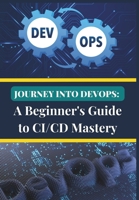Beginner's Guide to Sketching: Characters, Creatures and Concepts
Select Format
Select Condition 
More by Asadullah Alam
Book Overview
The ability to sketch confidently is an integral part to the beginning of any concept artist's workflow The Beginner's Guide to Sketching: Characters, Creatures and Concepts teaches the fundamentals of sketching, showing how important concept sketching is to artists of all levels. Established artists such as Rovina Cai, Justin Gerard, Nick Harris, and Rebeca Puebla explain how and when to use a variety of sketching materials, before moving on to warm-up exercises and top tips. The book also features master projects that show how to progress from early concepts, through poses, designs and costume elements, to a completed scene. Rovina Cai is a freelance illustrator from Melbourne, Australia, and has been featured in publications such as Spectrum Fantastic Art and American Illustration . Justin Gerard specializes in fine art and illustration and is based in Georgia, USA. He provides high-quality, original artwork for the publishing, game, and movie industries. Nick Harris is an established UK-based illustrator, having worked in the industry since 1982, who has specialized in artwork for various children's publications. Rebeca Puebla is a Spanish 3D senior character artist living in Madrid, Spain, working for Gameloft. Projects have included design, animation, and post-production for Ender's Game . This description may be from another edition of this product.
Format:Paperback
Language:English
ISBN:1909414239
ISBN13:9781909414235
Release Date:September 2015
Publisher:3dtotal Publishing
Length:208 Pages
Weight:1.95 lbs.
Dimensions:0.8" x 11.6" x 8.2"
Customer Reviews
5 customer ratings | 5 reviews
There are currently no reviews. Be the first to review this work.
























